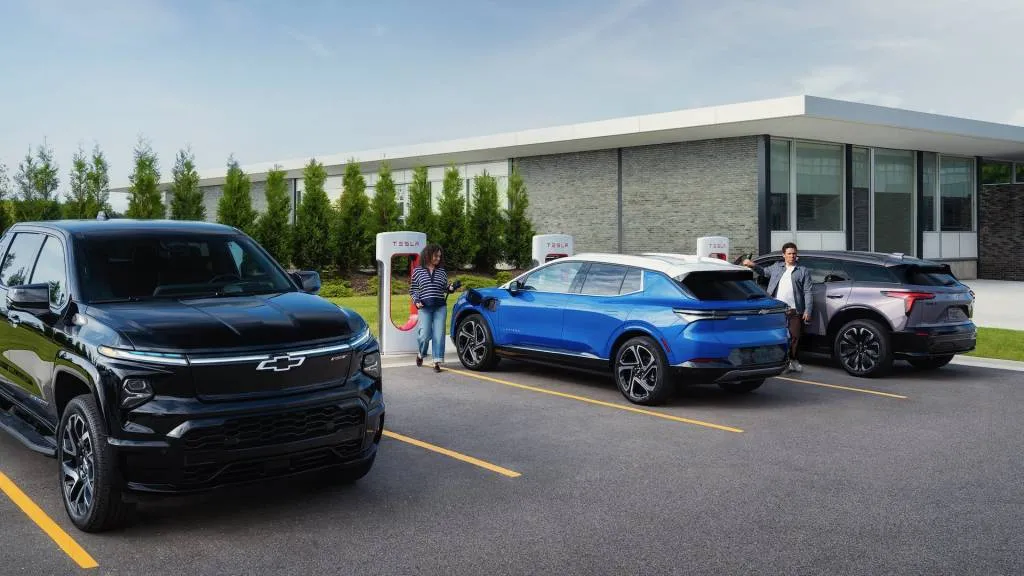- Superchargers are being equipped with longer cables in anticipation of V4 rollout
- Tesla now has the ability to identify non-Tesla EVs connected to its Superchargers
- This enables more precise real-time availability of charging stalls
Tesla is taking proactive measures ahead of the launch of its V4 Supercharger technology by installing longer cables and implementing other adjustments to streamline operations at Supercharger stations as non-Tesla EVs begin to utilize them more frequently.
The official Tesla Charging account on X, a social media platform owned by Tesla CEO Elon Musk, recently shared that the company is increasing the number of long-cable chargers at V4 locations and expects them to outnumber short-cable chargers within the next 18 months.
Tesla has also made modifications to over 1,500 sites to enhance accessibility for drivers and has updated the software that informs Tesla drivers about available charging stalls, as mentioned in the same post.

Chevrolet EVs at a Tesla Supercharger station
To address the possibility of EVs obstructing charging spots due to short cables, Tesla can now identify when a non-Tesla EV with a charge port in a different location is connected to a short-cable spot to avoid overestimating charger availability.
Tesla’s director of charging in North America, Max de Zegher, mentioned in an X post that Tesla can now detect the type of vehicle connected and the charger-availability algorithm refreshes approximately every 15 seconds.

Polestar 3 at a Tesla Supercharger station
The introduction of V4 Supercharger hardware by Tesla has commenced with initial installations in 2023, aimed at delivering the higher-power charging capabilities required for the Semi and Cybertruck.
While Tesla’s existing V3 Superchargers and current V4-like charging stalls are still V3 compliant and cannot support the peak charging rates of 800-volt EVs, the shift towards Tesla’s North American Charging Standard (NACS) has gained traction, starting with Ford in May 2023, leading to its formal recognition as a standard by the SAE, supported by the Biden administration’s funding for public charging expansion. Despite initial hesitations, Musk has committed to a $500 million expansion of the Supercharger network.
As more automakers offer adapters for their EVs to charge at Tesla Supercharger stations, the transition to the NACS has begun, with Ford, General Motors, Rivian, Polestar, and Volvo already on board. The 2025 Hyundai Ioniq 5 will feature a NACS port, with more non-Tesla EVs expected to follow suit in 2025.

